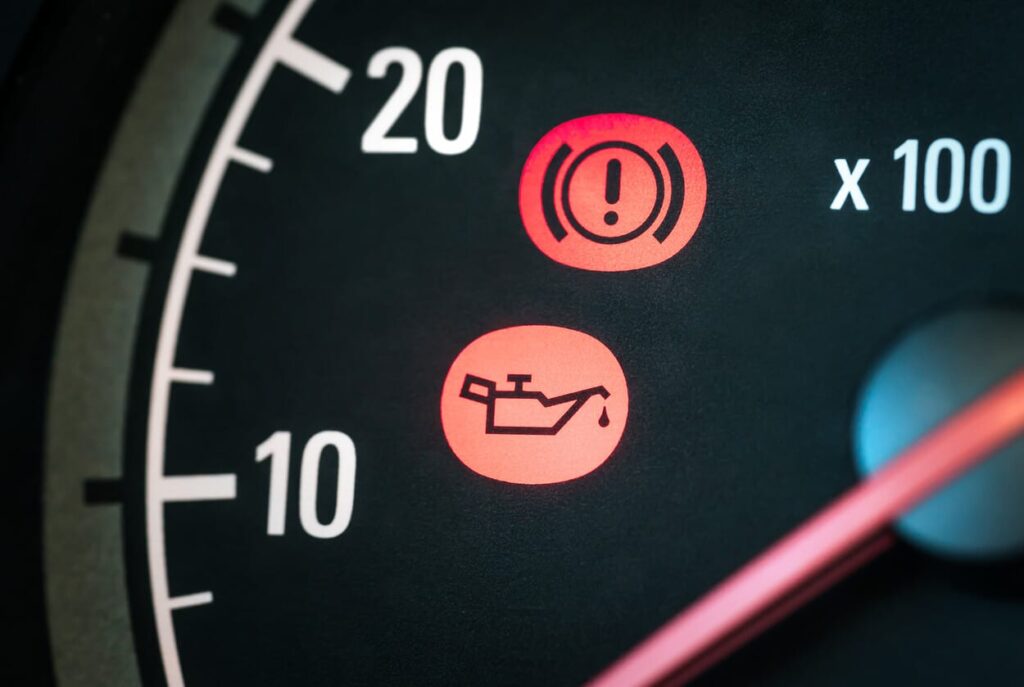Seeing your check engine light blinking while driving can be a nerve-wracking experience. It’s not just a warning—it usually means something serious is happening under the hood. Unlike a steady engine light, a flashing or blinking one typically indicates a severe engine misfire, which can damage your catalytic converter or other engine components if you keep driving.
Let’s break down what a blinking check engine light really means, why it happens, and what you should do next.
Contents
ToggleWhat Does a Blinking Check Engine Light Mean?
When the check engine light is blinking, it’s your car’s way of yelling, “Stop driving and check me now!” It’s a signal from the On-Board Diagnostics (OBD-II) system that your engine is experiencing a critical fault, often related to engine misfires.
In simpler words: the engine is either not getting the right air-fuel mix, firing at the wrong time, or both. If left unattended, this can lead to overheating, engine knocking, or even complete engine failure.
Common Reasons Your Check Engine Light Is Blinking
A blinking engine light is not something to ignore. Below are some of the most common causes:
1. Engine Misfire
This is the #1 reason. A misfire occurs when one or more of the engine cylinders isn’t firing properly. The causes can be:
- Worn-out spark plugs
- Failing ignition coils
- Fuel delivery problems
2. Bad Spark Plugs or Ignition Coils
Old or damaged spark plugs fail to ignite the fuel-air mixture, which leads to misfiring. Replacing these is usually a low-cost fix if caught early.
3. Fuel System Issues
Clogged fuel injectors or a failing fuel pump can mess with your fuel-to-air ratio, causing rough idling and blinking engine lights.
4. Faulty Sensors
Modern vehicles use a network of sensors, including oxygen sensors, mass airflow sensors, and camshaft position sensors. If these fail, the engine may get the wrong signals and run inefficiently.
5. Catalytic Converter Damage
If misfires continue, unburnt fuel can enter the exhaust system, damaging the catalytic converter—a very costly part to replace.
Should You Keep Driving with a Blinking Check Engine Light?
Absolutely not.
Unlike a solid engine light, a blinking one means immediate attention is needed. Driving with this warning could make a small repair job turn into a major engine rebuild. If you’re on the road:
- Pull over safely.
- Turn off the engine.
- Wait a few minutes.
- Start again—if the light keeps blinking, call a tow truck.
Even a short trip with a blinking check engine light can cause permanent damage. That’s why many experts recommend not driving any further once this warning appears.
How to Diagnose the Problem
If you want to understand what’s causing the blinking, here’s how you or your mechanic can diagnose the issue:
1. Use an OBD-II Scanner
Plug an OBD-II diagnostic tool into the port under your dashboard. It will show trouble codes like “P0301” (Cylinder 1 Misfire), which can help you figure out the exact issue.
2. Check the Spark Plugs
Remove the spark plugs and check for:
- Wear or corrosion
- Oil or carbon deposits
- Uneven gaps
If they look damaged or old, replace them immediately.
3. Inspect the Ignition System
Check your ignition coils or wires. Damaged or cracked coils often lead to misfiring.
4. Fuel System Check
Make sure your fuel injectors are not clogged, and that fuel is flowing properly to all cylinders.
What to Do If Your Check Engine Light Blinks
Here’s a step-by-step guide to follow if your light starts flashing:
Step 1: Pull Over Immediately
Find a safe place and stop the car. This prevents any further engine damage.
Step 2: Turn Off the Engine
Let it cool down. Sometimes the light goes away after a restart, but don’t ignore it if it comes back.
Step 3: Scan for Error Codes
Use an OBD-II scanner, or visit a local auto parts store—many offer free code reading.
Step 4: Call a Mechanic or Tow Service
If the code indicates a serious problem or you’re unsure what it means, it’s safer to have the car towed.
Step 5: Fix the Underlying Issue
Based on the diagnostic code, repair or replace the faulty part. Common fixes include replacing spark plugs, ignition coils, or sensors.
Can Low Oil Cause a Blinking Check Engine Light?

While low engine oil won’t usually trigger a blinking light, it can cause other engine problems like overheating or reduced performance. However, if your oil pressure drops dangerously low, your car might misfire and eventually trigger a blinking warning.
Always check:
- Oil level
- Oil quality
- Oil pressure warning light
If you’re unsure, you can refer to this helpful guide on engine oil symptoms to understand how oil and engine lights may be connected.
How Much Will the Repair Cost?
It depends on the problem:
| Problem | Estimated Cost (USD) |
| Spark plug replacement | $50–$150 |
| Ignition coil replacement | $100–$300 |
| Fuel injector service | $100–$400 |
| Catalytic converter replacement | $900–$2500 |
Remember, catching the issue early can save you hundreds, even thousands of dollars.
Final Thoughts: Don’t Ignore the Blink!
A blinking check engine light is your car’s way of telling you something is seriously wrong. It’s not a drill—get it checked immediately to avoid costly repairs and dangerous driving conditions. Whether it’s a simple spark plug replacement or a more serious engine issue, fast action is always the best response.
Pro Tip: Always carry a portable OBD-II scanner in your glove box. It’s a small investment that can save you time, stress, and money in the long run.
FAQs About Blinking Check Engine Light
Q1: Can I reset the check engine light by myself?
Yes, using an OBD-II scanner. But if the issue isn’t fixed, the light will return.
Q2: Is a blinking light worse than a steady one?
Yes. Blinking means an emergency, while steady means non-urgent issues.
Q3: Can I drive short distances with the light blinking?
Even short trips can damage the catalytic converter. Avoid driving until it’s fixed.
Q4: Will low fuel quality cause the engine light to blink?
Poor fuel can lead to misfires, which may trigger the blinking light. Always use top-tier gasoline.
Q5: How often should I replace spark plugs to avoid misfires?
Every 30,000 to 100,000 miles, depending on your car’s manufacturer recommendations.



